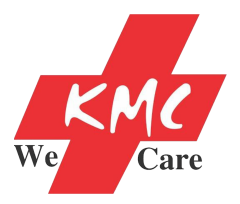High blood pressure is a “silent killer” because it frequently reveals minimal signs of its presence. Worldwide hypertension affects 1.28 billion adults aged 30-79 according to the World Health Organization but successful blood pressure control exists for just one out of every five patients. High blood pressure creates multiple health dangers because it drives up individuals’ likelihood of developing heart diseases and risks stroke, final stage kidney failure and numerous other severe medical problems.
The correct comprehension of blood pressure allows people to identify hypertension correctly. The blood pressure measurement displays two numbers with units of millimeters of mercury (mmHg) showing systolic pressure (first number) indicating artery blood pressure at heartbeats and diastolic pressure (second number) indicating artery pressure during heart rest. The general public sees 120/80 mmHg as the typical normal value for blood pressure. When someone receives a hypertension diagnosis their blood pressure must demonstrate persistent readings above 130/80 mmHg.
High blood pressure develops slowly without causing direct symptoms throughout many years. People commonly ignore their blood pressure condition because they do not experience any symptoms until their health reaches serious stages.
The following sections of this post will highlight several diagnostic approaches to determining whether you have high blood pressure. Knowledge of high blood pressure allows people to make proper choices in managing their condition, leading to improved health and well-being.
Identifying the Indicators of Hypertension
1. Regular Monitoring of Blood Pressure
Regular blood pressure measurement represents the safest method to determine if hypertension exists in your body. People can conduct blood pressure measurements through home testing with digital machines and routine healthcare appointments. To obtain correct blood pressure measurements you should practice measuring simultaneously daily in a relaxed environment. Individuals with hypertension risk factors need to check their blood pressure tests more often.
2. Understanding Symptoms
People might experience symptoms of hypertension but most individuals show no signs because high blood pressure tends to have no apparent symptoms. These symptoms may include:
- Headaches: Regular severe headaches together with increased blood pressure readings may signal a health condition.
- Dizziness: Unusual levels of dizziness or lightheadedness are common indicators of hypertension.
- Nosebleeds: Frequent nosebleeds occur with some rarity but high blood pressure represents one possible cause of these events.
- Shortness of Breath: Heart and blood vessel functions may cause difficulties in managing normal breathing which results in shortness of breath.
- Chest Pain: Chest Pain identifies itself as a life-threatening condition that requires immediate medical help.
3. Identifying Risk Factors
Risk factor analysis assists in determining your potential chance of developing high blood pressure. Common risk factors include:
- Age: People tend to experience higher blood pressure as they grow older.
- Family History: The presence of hypertension within your family history raises your chance of developing this condition.
- Obesity: Excessive weight puts pressure on your blood pressure system.
- Diet: Blood pressure levels increase when patients consume diets high in salt while eating foods with saturated fats and processed foods.
- Physical Inactivity: Inactivity from exercise becomes a leading risk factor that causes hypertension to develop.
- Smoking: At first, smoking causes blood pressure elevation and then damages blood vessel walls to create prolonged blood pressure increase.
- Alcohol: Consuming large amounts of alcohol causes measurements of blood pressure to increase.
- Chronic Stress: Long-term stress/pressure leads to periodic blood pressure increases that raise the risk of developing hypertension in the future.
You should begin actively tracking your blood pressure when any of these risk factors apply to you.
4. Routine Health Check-ups
Having routine appointments with your healthcare provider stands as an essential step. The healthcare provider measures blood pressure as part of each visit. The check-up allows patients to share wellness concerns along with physicians evaluating their heart health condition. People at risk for hypertension or with a family background of high blood pressure receive more regular medical checks and lifestyle advice from their doctor.
5. When to Seek Medical Advice
Healthcare consultation should not be delayed when you experience risk factors or unusual symptoms that might indicate high blood pressure. Their examination will include blood tests and extra monitoring to determine if hypertension exists and to develop appropriate management strategies. They can provide:
- A comprehensive evaluation of your health.
- Healthcare professionals will help patients establish lifestyle modification plans focusing on eating habits and workout methods.
- Doctors have multiple medications that successfully control blood pressure levels.
Conclusion
A person must know how to conduct blood pressure monitoring along with recognizing symptoms and self-assessing risks to identify their blood pressure status. Regular blood pressure checks with open communication with your doctor remain crucial because high blood pressure rarely reveals physical indications. Being both informed and vigilant allows you to efficiently care for your health by decreasing blood pressure risks to live a healthier life. Better health outcomes require proactive methods because knowledge functions as a strong instrument for achieving positive results.
KMC Hospital delivers specialized hypertension care with superior diagnostic testing and tailored treatment approaches for its patients. Our physicians will provide expert guidance to people who believe they have high blood pressure or wish to take precautionary steps. Make health a top priority for today to secure a better well-being tomorrow.

